Matador Network's Blog, page 1114
April 23, 2019
Two-thirds Americans lie about trips

Everyone knows that Instagram doesn’t always equal reality, but now there’s actually a study to prove it. A survey conducted by Jet Cost, a flight-comparison site, found that many US travelers may be lying about how much they actually enjoyed their vacations. The survey polled over 4,000 people and about two-thirds admitted to misrepresenting their last getaway.
A spokesperson for Jet Cost told TravelPulse, “Even though it is probably more common than not in the US to have not holidayed abroad, Americans are clearly still feeling the need to appear as if they have traveled.”
Sixty-one percent of respondents admitted to exaggerating the truth about their vacation. More specifically, 34 percent said they represented weather conditions as more favorable than they actually were, 29 percent exaggerated the quality of their accommodations, and 27 percent embellished when it came to sightseeing.
The spokesperson went on to say, “With the modern pressures of social media, people feel as if they have to prove themselves to others, which is a shame. But life isn’t a competition and just because someone says they’ve done something, doesn’t mean you’re less of a person for not having done it.”
A significant number also lied about the amount of alcohol consumed and how much money they spent, and a whopping 52 percent revealed that even if they had a horrible trip, they probably wouldn’t tell anyone. Perhaps most surprising at all, 10 percent of respondents admitted to posting a fake photo on social media to reinforce their lies.
So while your friends might be posting some pretty spectacular Instagram photos, igniting your FOMO, don’t worry. It’s fairly likely that they were miserable for at least part of that trip. 
H/T: Travel & Leisure

More like this: Why traveling for the #gram is a terrible idea
The post Two-thirds of Americans are lying about how awesome their vacation was appeared first on Matador Network.

Buffalo viewing in South Dakota

Even North America’s most impressive mammals have to start small. Case in point: the baby bison that roam around South Dakota’s Custer State Park, home to one of the largest bison herds in the world with over 1,300 animals in its 71,000 acres.
The herd births several calves each year, and this past week saw the first one of 2019 greet the world, a cinnamon-furred calf that’s the park’s youngest attraction. It’s already doing well, grazing around the tall grasses with its mother, doing typical bison stuff as it gets its legs under it. You can check out all its adorable antics in this video.
While hundreds of years ago bison numbered in the tens of millions in North America, by the end of the 20th century their numbers were down to just over a thousand. Through conservation and breeding programs, there are nearly half a million on the continent, many of which you can see during a two-hour jeep safari at Custer State Park.
Spring is an especially good time to tour the park as in addition to baby bison, you’ll also see newborn elk, deer, and bighorn sheep. You’ll spot many of them while traversing the park’s 18-mile Wildlife Loop Scenic Byway. It’s also smack in the middle of South Dakota’s Black Hills, a short (by SoDak standards) drive to Mount Rushmore, Badlands National Park, and the world’s greatest variety store at Wall Drug.
So even if you’re not into adorable baby animals, this spring might be an ideal time to go check them out. It’s a much more rewarding experience than going to the zoo, and as cute as this video is, it’s a far more impressive site in person. 

More like this: South Dakota is the most underrated state in America. Here’s why.
The post This video of a baby bison will have you planning a trip to South Dakota appeared first on Matador Network.

Hawaii giveaway to NYC metro riders

If you thought your NYC MetroCard was useless for anything besides a trip on a cramped subway, think again. The Hawaii Visitors and Convention Bureau (HVCB) is giving away a trip to Hawaii, and your MetroCard is your ticket to win.
From Tuesday, April 23, to Tuesday, April 30, participating MTA subway MetroCard Vending Machines will be filled with 250,000 Hawaii-themed MetroCards. After purchasing one of these special cards, visit www.hawaii.nyc, enter the code on the back of the card and be entered into the giveaway. The winner (who can bring a plus one) will be chosen on May 8.
The vacation includes round-trip airfare to either Kauai, Lanai, Molokai, Oahu, Maui, or the island of Hawaii; seven days and six nights at a hotel; a rental car; and a $1,500 gift card to be used as pocket money.
Eight MTA stations are participating in the promotion, including:
72nd and Amsterdam — (1, 2, 3)
86th and Lexington — (4, 5, 6)
59th and Columbus — (A, B, C, D)
23rd and 8th — (C, E)
14th and Union Square — (L, N, Q, R, W, 4, 5, 6)
Broadway & Lafayette at Houston — (B, D, F, M)
Fulton Street — (A, C, J, Z, 2, 3, 4, 5)
Atlantic Av-Barclays Ctr — (B, Q, 2, 3, 4, 5)

H/T: Travel & Leisure

More like this: The best times of the year to visit Hawaii
The post Your NYC MetroCard can win you a trip to Hawaii appeared first on Matador Network.

JFK Airport TWA Hotel infinity pool

Making airports pleasant places to hang out in sounds like a pretty insurmountable task, but this airport hotel might have finally cracked the code. The new rooftop infinity pool at John F. Kennedy Airport’s TWA Hotel will make you want to arrive three hours early — even for regional flights.
Modeled after the infinity pool at the five-star Hôtel du Cap-Eden-Roc in Antibes, France, this 63-by-20-foot-long pool allows you to relax while watching planes take off and land on one of JFK’s busiest runways. The surrounding 10,000-square-foot observation deck and pool bar is a prime location for plane spotters who prefer to stay dry, but could do with a cocktail and some food. And the best part is that you don’t even need to be a hotel guest to use it. Hotel guests have free access, while visitors can make advance reservations.
The pool is outdoors, but in the winter, it will be heated to 100 degrees and turned into a “pool-cuzzi,” so you can have a swim year-around.
The hotel and its amazing pool and observation deck are opening on May 15, 2019. 
H/T: Condé Nast Traveler

More like this: Airport food is actually good now, at least at these US airports
The post JFK Airport’s TWA Hotel now has a rooftop infinity pool overseeing the runaway appeared first on Matador Network.

April 22, 2019
Traditional Chilean food and dishes

Chile is undeniably beautiful. Patagonia, the lake district, the stunning Torres del Paine National Park — with all of these things to see, you’d be forgiven for looking over the country’s diverse food. However, for a real taste of Chile, you have to experience all of the eats on offer.
Chilean food is a mix of ingredients and dishes from the indigenous Mapuche and the Spanish. It’s heavily influenced by the country’s 2,600 miles of coastline and varied microclimates. Naturally, you can’t come to Chile without enjoying its wide variety of fresh seafood. There are, to name a few favorites, fresh machas a la parmesana (grilled razor clams baked in their shells with parmesan cheese and white wine), salmon, Chilean sea bass, and congrio (white eel usually served fried). And don’t forget about locos, or Chilean abalone, which are a species of large sea snails only found off the coast of Chile and Peru.
It’s not all seafood, though. In cities like Santiago, you’ll find a bounty of street food like sopapillas (deep-fried pastries) served with pebre (a salsa similar to pico de gallo). There’s mote con huesillo (a summertime drink of dried peaches, sugar, and husked wheat) and empanadas de pino (baked empanadas stuffed with Chilean ground beef). Not to be forgotten are well-stuffed sánguches (sandwiches). Leave for the countryside and you might find yourself lucky enough to partake in a traditional Chilean asado where a whole lamb is barbecued over an open flame.
The amount of good food in Chile feels endless. These nine dishes are a good start to understanding the country’s food.
1. Completo

Photo: Larisa Blinova/Shutterstock
If you’re looking for something hearty, then order a completo, or Chilean hotdog. It’s the perfect on-the-go-food and is the country’s favorite street snack. Try the completo Italiano, which comes loaded with avocado, tomatoes, and lots of mayo.
2. Chorrillana

Photo: Larisa Blinova/Shutterstock
If you’re going out for drinks looking for a dish to share with friends, the chorrillana is your best option. It’s a huge pile of french fries topped with sauteed onions, shredded beef, sausage, and two fried eggs slapped on top. Enjoy it with a nice cold beer and some live music and you’ve got yourself a good evening.
3. Pastel
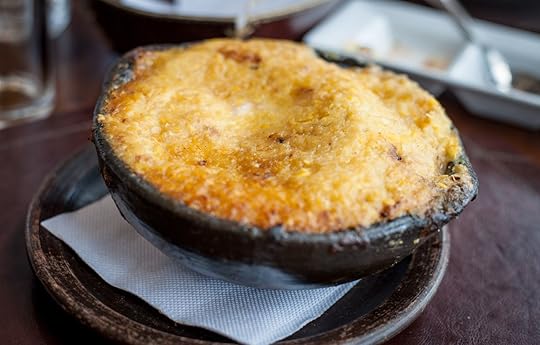
Photo: Pablo Rogat/Shutterstock
These savory corn pies will fill your heart and stomach at the same time. Depending on the time of year, you can find a wide variety of pastels in Chile. You’ll always find the traditional pastels baked in a clay bowl, which helps maintain the heat and is prepared in layers. During the summertime, make sure you try pastel de choclo, a corn pie filled with beef, onions, eggs, and chicken. If you’re looking for a seafood variety, pastel de jaiba is right up your alley. This crab pie is available almost all year round.
4. Chupes
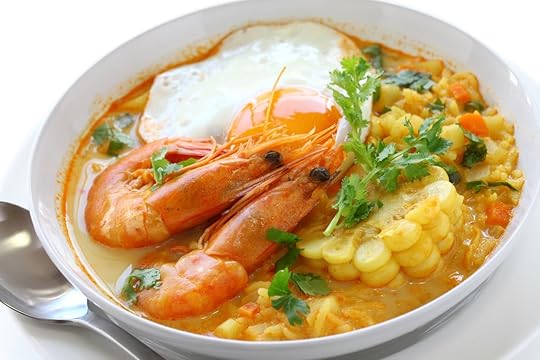
Photo: bonchan/Shutterstock
A creamy and stew-like dish, chupes are almost always seafood based and have bread mixed in to brings all the ingredients together. They’re traditionally served in a clay bowl to help maintain the heat. Normally, you can find chupe de camarones (shrimp), centolla (king crab), or locos(Chilean abalone) year round.
5. Porotos granados

Photo: Larisa Blinova/Shutterstock
A summertime favorite, this vegetarian dish is a classic for locals. Porotos granados is made with cranberry beans, corn, and squash that are mixed together into a wonderful stew that will make anyone feel at home. Meat lovers can throw chorizo on top. Ensalada Chilena (sliced tomatoes, onions, and cilantro) is regularly served on the side.
6. Humitas

Photo: Larisa Blinova/Shutterstock
Similar to Mexico’s tamales, humitas are 100% vegetarian and packed with flavor. This simple dish is eaten during the summer months but can be frozen to enjoy year round. Wrapped in a corn husk, most people will eat two humitas in one sitting. There are two ways to eat them. You can add sugar and watch the crystals melt when they touch the hot humita, or you can eat it with an ensalada Chilena, which gives the dish a freshness to it on a hot day.
7. Cazuelas
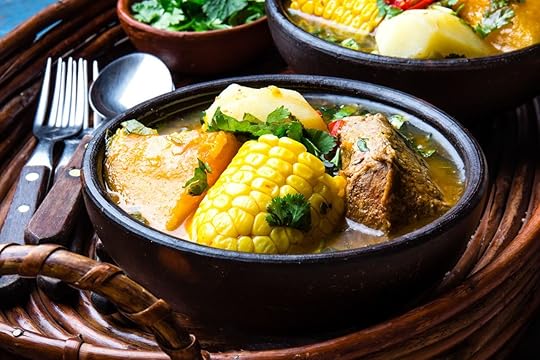
Photo: Larisa Blinova/Shutterstock
Almost every country in South America has its own version of this dish. Cazuelas are named after the clay pots they’re cooked in, and, while recipes vary, Chilean cazuelas typically have beef or chicken, squash, potatoes, corn, green beans, and rice. It’s a simple dish that’s packed with flavor and perfect for when it’s a bit cooler outside.
8. Charquicán

Photo: Fanfo/Shutterstock
Charquicán is a beef stew that’s slow-cooked with squash and potatoes. It’s traditionally prepared with dried beef though today most Chileans prepare it with beef roast. Charquicán is often served with a fried egg on top.
9. Cochayuyo
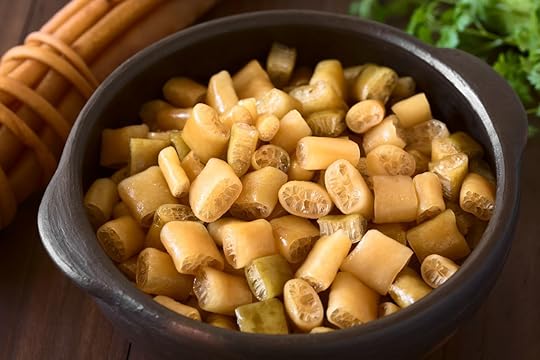
Photo: Ildi Papp/Shutterstock
Cochayuyo is a variety of seaweed common in southern Chile’s coastal region that was a key traditional ingredient for indigenous peoples. There are several ways to prepare cochayuyo, but most people will eat charquicán de cochayuyo, which is the same as the traditional charquicán but without beef. You can also make burgers or salads from cochayuyo. 

More like this: Chile’s whole-lamb, open-fire asados put your local barbecues to shame
The post 9 traditional Chilean dishes the world needs to know appeared first on Matador Network.

Guide to Portugal's top wine routes

Long eclipsed by French Burgundys and Italian Chiantis, Portuguese wine hasn’t always garnered the attention it deserves, despite the nation’s wealth of vineyards and praiseworthy vintages.
Its most iconic wine, port, is fortified with an unaged brandy. Then there’s vinho verde, or green wine, a lightly fizzy, lightly viridescent summer staple from northern Portugal. Add in the fortified wines moscatel and Madeira, sparkling wine, and rosé, and you’ve got your glass full before even considering the country’s vinho tinto and vinho branco, or red and white table wines.
That isn’t to say Portugal’s wine culture is inaccessible. Like everything Portuguese, the enotourism scene is easy and inviting, anchored by the terraced vineyards and quintas, or estates, of the country’s top-producing wine regions.
Grapes grow everywhere in Portugal: up in the hilly north, along the coast and interior border with Spain, down south in the beachy Algarve. There are over 250 native varieties total across 31 wine-producing regions. So, while most who wax on about their idyllic escapes to Portugal’s wine country are referencing the Douro Valley, dedicated connoisseurs and travelers can see more of the country than they might realize through rosé-colored glasses.
Here are the best of Portugal’s wine routes, a handy guide whether you drink chardonnay like it’s a part-time job or you’re just as happy DDing if it means a trip to Europe.
Douro Valley
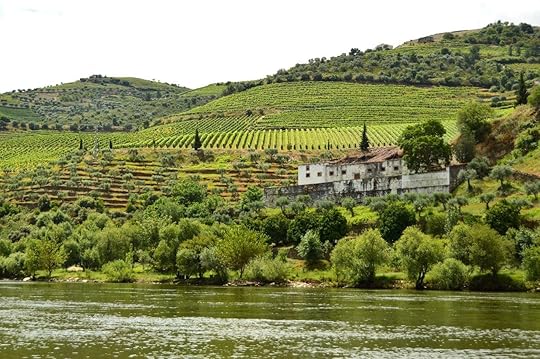
Photo: Agnieszka Skalska/Shutterstock
Vineyards tumble down hillsides throughout the Douro Valley, their trim, tidy grapevines embroidering the earth on both sides of the Douro River. Viticultural traditions have existed here for millennia though the Alto Douro wine region wasn’t officially demarcated until 1756. Among the oldest in the world, it was inscribed as a World Heritage site in 2001.
Port wine was a coveted export in the 18th century, much as it is now, but travelers are increasingly keen on sampling the region’s famous fortified wine from the source. Many are surprised to find solid table wines that are improving by the season, as well. Plan a side trip from Porto in spring or early summer for milder temperatures and thinner crowds than July or August. To participate in the harvest, come between late September and early October.
Getting there and around

Photo: PIXEL to the PEOPLE/Shutterstock
From Porto, you can tour the Douro Valley by car, train, or cruise.
If you rent a car, start by driving a little over an hour to Vila Real, home of the 18th-century Casa de Mateus palace made famous by Mateus rosé labels. Continue on to Alijó and neighboring Favaios, then hit Pinhão and Provesende. The stretch from Pinhão to Peso da Régua on the N222 is a highlight of the drive with Régua itself often called the gateway to the Douro. Time permitting, squeeze in the wineries around São João da Pesqueira, Trevões, and Barcos.
Make a final stop in Mesão Frio on the way back to Porto. As you drive, keep an eye out for miradouros, or scenic lookouts, like the Miradouro de São Leonardo da Galafura outside Régua.
Trains are an even more picturesque, albeit less comfortable, option. Board the Linha do Douro, or Douro Line, from the Campanhã or beautifully tiled São Bento train station in Porto. Debark in Régua or continue on to Pocinho via Pinhão for unbeatable river views.
Cruises depart from Porto and Vila Nova de Gaia, a city across the Dom Luís I Bridge from Porto filled with cellars where port is aged and tasting rooms where it’s enjoyed. Cruises can last a day, a week, or longer. More extensive itineraries generally include Douro staples and Portuguese cities like Lisbon and Coimbra, as well as outside trips to Madrid or Salamanca in Spain. Book with Viking River Cruises, AmaWaterways, Emerald Waterways, or Riviera Travel.
Where to taste
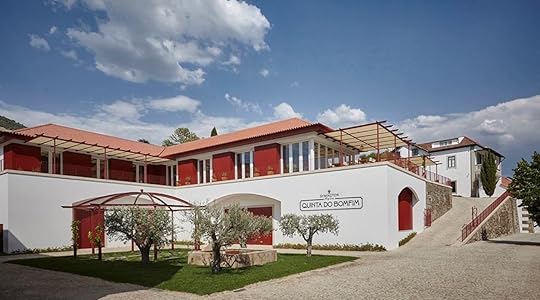
Photo: Quinta do Bomfim/Facebook
Quinta do Bomfim: Run by the Symington family for five generations, this estate in Pinhão famously makes Dow’s ports, which get rave reviews much like the winery’s tastings. Take a self-guided tour before sampling some port or call ahead to arrange a picnic.
Quinta das Carvalhas: An expansive quinta opposite Pinhão on the left bank of the Douro River. Guided and self-guided tours of the estate’s vineyards, garden, and farmland are possible, as are birdwatching and hiking to the hilltop Casa Redonda. When you’re ready for vinho, enjoy a private tasting of table wines capped off with vintage ports, then hit the wine shop.
Quinta da Pacheca: A grand, pristine property perfect not only for day trips but also weddings and other special events. Tastings include red and white table wines, as well as the estate’s better-known ports. Guests can enjoy bicycles, cooking classes, wine lunches, and more.
Where to stay

Photo: The Yeatman/Facebook
The Yeatman Hotel: A Relais & Chateaux property in Vila Nova de Gaia with a two-Michelin-star restaurant and massive cellar. Wine-themed artwork graces the walls, books on wine line the bookshelves, and the spa incorporates grape extracts in its treatments. Rooms are equipped with private terraces or balconies with views over Porto and the Douro.
Six Senses Douro Valley: A stately, 19th-century manor greets guests of this eco-friendly hotel just outside of Lamego, the first Six Senses property in Europe. Expect farm-to-fork dining, spa treatments with locally sourced ingredients, and yoga sessions, plus nightly wine tastings.
Quinta Nova de Nossa Senhora do Carmo: An early wine hotel in the region, Quinta Nova is an excellent place to learn about farming and winemaking. The 100-acre estate is near several wineries, including Quinta do Crasto, but also houses vineyards of its own.
The Vinho Verde Route
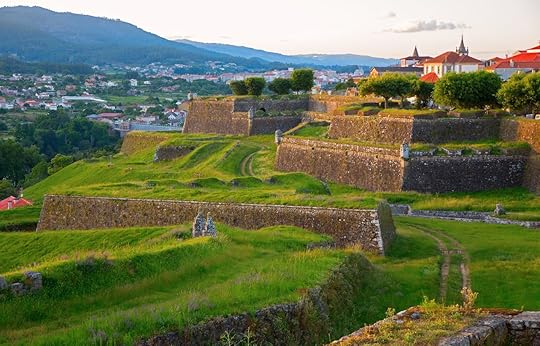
Photo: FCG/Shutterstock
Tourists rarely travel farther north than Porto, leaving some of the prettiest, ruggedest, most traditional pockets of Portugal to locals. In the northwest, the Minho region rewards those who do visit with the Vinho Verde Route, a winery trail that loops around a quieter slice of wine country and brushes up against Spain’s Galicia wine region above.
Portugal’s most iconic wine after port, vinho verde can be red, white, or rosé. Although some white vinho verdes do appear greenish, the moniker refers to the grapes being picked early, producing young, or green, wines. White vinho verde is the most popular, especially to help quell the heat on summer days. Reds are tannic and fruit-forward; rosés are light and fruity.
Getting there and around
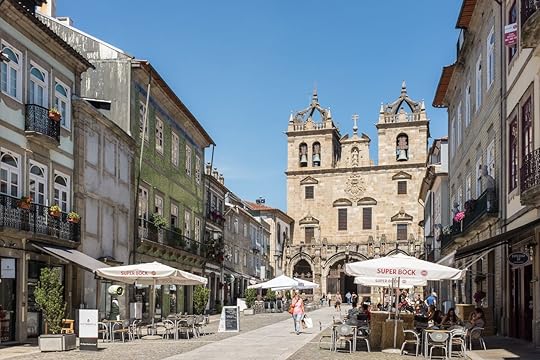
Photo: Glen Berlin/Shutterstock
Rent a car in Porto and drive to Braga, the historic capital of the Minho region and a good base for winery visits. Stop in Guimarães, called the birthplace of Portugal, on the way. From Braga, visit romantic Ponte de Lima 30 minutes north. In another half hour, you’ll hit the rolling hills of Valença do Minho, one of which is topped with a historic fort. Then, hug the Spanish border through the Monção and Melgaço region, renowned for its alvarinho grapes.
To close the loop, head south on the N101 from Monção to Ponte de Barca. Detour at the fabulous Peneda-Gerês National Park for a hike or nearby Vieira do Minho for a meal if you have time, then return to Braga. On your way back to Porto, hit up Penafiel for a final tour, tasting, and toast to your Vinho Verde Route road trip.
Where to taste
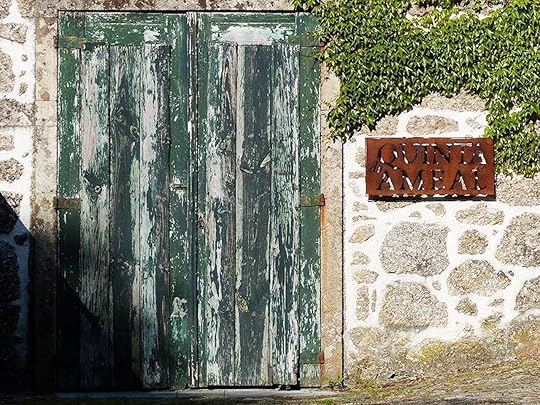
Photo: Quinta do Ameal/Facebook
Quinta da Aveleda: Centuries-old estate in Penafiel and major name in vinho verde exports. Taste wines from Vinho Verde, Douro, and Bairrada with cheese and chocolate pairings; choose a more food-focused program with regional snacks like cod fritters and blood sausage; or stay for lunch and a stroll through the site’s parks and gardens.
Quinta de Soalheira: A family-run winery and pioneering Alvarinho brand in Melgaço. Tour the organic vineyard, sparkling wine cellar, and ageing rooms, followed by a tasting of fresh, acidic whites, rosés, and sparkling wines. Expect to be treated like family, too.
Quinta do Ameal: Specializing in white wine made from Loureiro grapes, this 30-hectare estate in Ponte de Lima dedicates 12 hectares to vineyards. It doubles as a hotel where guests can kayak down the Lima River or cycle through the countryside in their free time.
Where to stay
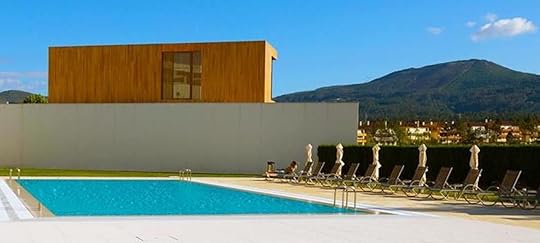
Photo: Hotel Minho/Facebook
Hotel Minho: Pair wine and wellness at Hotel Minho in Vila Nova de Cerveira, where you can unwind after a full day of drinking with spa treatments like a barrel bath, honey massage, and de-stressing grape-seed treatment that celebrate the local bounty.
Carmo’s Boutique Hotel: An intimate retreat in Ponte de Lima, Carmo’s has just 15 suites and three luxury tents, plus a long list of organized activities centered on food, wine, and nature.
Meliá Braga: Sleek, modern, and central, Meliá Braga offers great value at a reasonable rate if you plan on making Braga home base. Count on clean, spacious rooms and a long spa menu.
Alentejo

Photo: Magdalena Paluchowska/Shutterstock
Foodies sniffed out the Alentejo region years ago, discovering a cuisine that can be sopped up with fresh bread: silky olive oils and gooey cheeses, soups, stews, and delicacies like carne de porco à Alentejana, a juicy dish made with pork and clams. Locals wash it all down with wine, which outsiders are quickly learning to appreciate as more than just a mealtime complement.
The Alentejo region covers about a third of Portugal, starting northeast of Lisbon and running south until it meets the Algarve. Its capital, Évora, is a tourist hub and World Heritage site since 1986 that UNESCO calls a “museum city.” Much of the rest is countryside where indigenous grapes like Alicante Bouschet and Touriga Nacional grow alongside non-native varieties like Syrah. Fans of full-bodied reds will adore the Alentejo’s wineries. Visit even if you prefer whites, which around here are mostly made from the Antão Vaz grape.
Getting there and around

Photo: Celli07/Shutterstock
Again, we recommend renting a car, only this time in Lisbon. Drive an hour and a half east to Évora to see the Roman temple, Gothic cathedral, and bone chapel. From there, head northeast to Redondo and Borbo, then swing by Estremoz, a marble town decked out in the material that made it famous with a few good lunch spots. Drive another 45 minutes to Portalegre, a subregion with a cooler climate centered on a sweet little town of the same name.
Southeast of Évora, Reguengos de Monsaraz deserves a lengthy visit. Outside of its wineries, there are dolmens and other megalithic relics nearby, as well as pottery hub São Pedro do Corval and the hilltop village of Monsaraz. From there, continue on to Granja-Amareleja, Moura, and Vidigueira. It’s only 45 minutes from Vidigueira back to Évora or two hours to Lisbon.
Where to taste
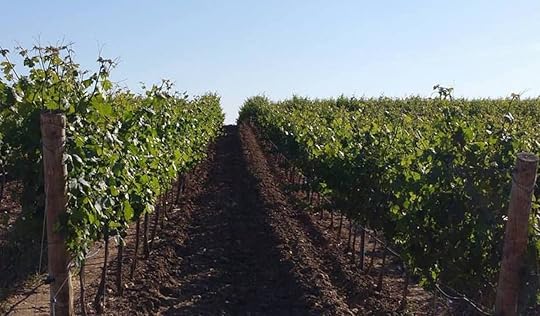
Photo: Herdade do Freixo/Facebook
Herdade do Freixo: An underground winery in Redondo, literally built beneath the vines, with a minimalist yet expansive feel. You’ll appreciate the spiral core, reminiscent of the winding walkway in NYC’s Guggenheim, and the winery’s focus on nurturing its grapes without sullying the 300-hectare landscape. Book your tour and tasting in advance.
Herdade do Esporão: A blocky, stark white estate poking out from swaths of vineyard near Reguengos de Monsaraz like a lego house. Founded in 1267, the winery grows more than 40 grape varieties over 700 hectares and makes olive oil, as well. Visit the cellar and onsite museum, book a barrel or blind tasting, or follow a heritage walk with lunch at the seasonally focused restaurant.
Quinta de Dona Maria: Tastings at this estate near Estremoz range from a basic rosé, red, and white sampler to special reserves and a nine-wine tasting. Regional cheese pairings are included. Visit the site’s 18th-century chapel and gardens before you go.
Where to stay
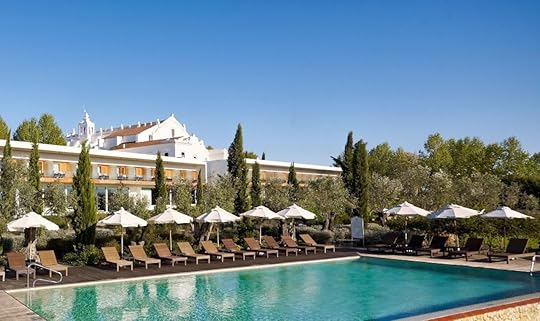
Photo: Convento Do Espinheiro/Facebook
Convento do Espinheiro: Nineteenth-century convent turned luxury hotel and spa outside Évora’s city center. Your choice of 90 rooms and suites split between the historic convent and a new addition. Enjoy an award-winning spa, tennis court, and nearly 20 acres of gardens. The restaurant, Divinus, serves upscale local fare like black pork tenderloin and octopus carpaccio.
L’AND Vineyards: Retractable roofs in the rooms of this 26-suite hotel in Montemor-o-Novo promise optimal views at all times. Indulge in regional and Mediterranean flavors at the two-Michelin-star restaurant or focus on wellness with yoga, meditation, massages, or a detox.
Torre de Palma Wine Hotel: A boutique hotel housed in a 14th-century structure in Monforte at the doorstep of Serra de São Mamede Natural Park. When they aren’t sipping wine from the hotel’s vineyard, guests can enjoy the spa, indoor and outdoor pools, and stables. 

More like this: 4 underrated Eastern European wine regions to visit before they’re famous
The post The ultimate guide to Portugal’s top wine routes appeared first on Matador Network.

Road renamed ‘R 2D2’ in Ireland

This road’s name change might confuse your GPS, but Star Wars fans definitely won’t mind. The road formerly known as R 242, running through the Inishowen Peninsula near Malin Head in County Donegal, Ireland, has been renamed R 2D2 to honor the beloved Star Wars character. The name change was intended to temporarily mark the filming location for scenes from The Last Jedi, but the county council approved a permanent change.
Jack Murray, a local councillor who also works with tourism organisation Explore Inishowen, explains to that the county is hopeful the sign will attract visitors for a fun photo opp.
The signage change arrives just in time before Malin Head/Inishowen, as well as Portmagee and Ballifferiter in county Kerry, host the May the 4th be with you festival, scheduled for May 3-5. According to the festival’s website, visitors should “prepare to get intergalactic along this cosmic coastline; gaze deep into the night at galaxies far, far away; enjoy exclusive screenings of Star Wars: The Last Jedi against the backdrop of actual film locations; catch behind-the-scenes exhibitions; visit beehive huts; enjoy tours, tastings and even train in the ways of the Jedi.” 
H/T: Lonely Planet

More like this: The best one-day ‘Game of Thrones’ road trip through Northern Ireland
The post appeared first on Matador Network.

Best cafes in Paris
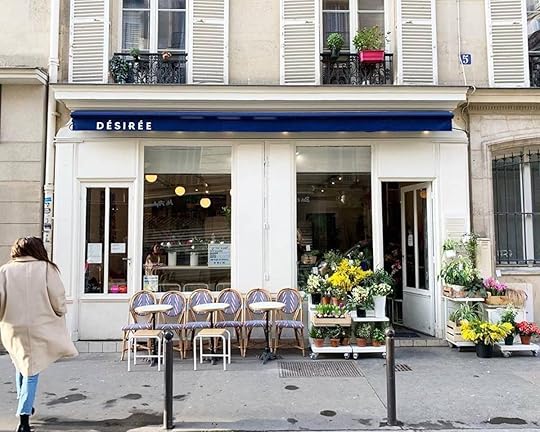
No city does café culture better than Paris. Whether you’re looking for fluffy croissants, a crisp glass of wine, or a simple petit café, when in the French capital, the answer is most likely to be found just around the corner. Though with so many cafés, hitting the city’s in-the-know spots is key to avoid having your experience tainted by crowds. We’ve rounded up eight of Paris’s trendiest cafés, sure to buzz you up and fill your stomach with pastry goodness. Pop in, place your order, and let the magic of Paris do the rest.
Café de la Nouvelle Mairie
View this post on InstagramA post shared by kelco_in_paris (@kelco_in_paris) on Jun 21, 2018 at 1:41am PDT
Open from 8:00 AM to midnight, there’s really not a bad time to hit Café de la Nouvelle Mairie, located in Paris’s fifth arrondissement. Whether coffee is calling or apéro hour is approaching, the café’s coffee and wine menus rotate regularly (and can be seen on the chalkboard inside). Small bites, such as cheese, foie gras, and oysters are also available. Enjoy the quiet charm of this Left Bank location, situated just around the corner from the bustling Place du Pantheon. Note: The café is closed on weekends.
Where: 19 Rue des Fossés Saint-Jacques, 75005 Paris
Fondation Café
View this post on InstagramA post shared by Fondation Cafe (@fondationcafe) on May 16, 2017 at 10:16pm PDT
Small but fierce, Fondation Café is the perfect spot for a cuppa and a few minutes of solitude. Known for strong espressos, meticulously crafted cafés crème, and a chocolate cake that’s worth every calorie, this tiny local joint is a great spot. Banana bread and freshly squeezed orange juice are also served regularly, alongside a small snack menu featuring avocado or honey ricotta tartines, as well as crunchy granola, cakes, and other pastries. Be advised, the café doesn’t have a bathroom, so don’t plan on staying too long.
Where: 16 Rue Dupetit-Thouars, 75003 Paris
Ten Belles
View this post on InstagramA post shared by Ten Belles (@tenbelles) on Apr 22, 2019 at 2:58am PDT
Close to the lively Canal Saint-Martin sits the famous Ten Belles café. This stop is known for its delicious brews, small snacks, and above all, great atmosphere. For American visitors yearning for a decent-sized coffee, Ten Belles’ café filtré is your answer. Food is catered by the equally well known Le Bal Café, and you won’t want to miss your chance to taste the scones. Arrive early to snag one of the few seats — Ten Belles opens at 8:00 AM on weekdays and 9:00 AM on weekends.
Where: 10 Rue de la Grange aux Belles, 75010 Paris
La Caféothèque
View this post on InstagramA post shared by La Cafeotheque Paris (@lacafeotheque) on Sep 24, 2018 at 12:39am PDT
La Caféothèque is one of the only cafés in Paris to roast beans right on site, also available for take-away purchase. Drinks are meticulously crafted by the café’s impeccable team of sommeliers de café, and the location of the joint isn’t so bad, either. Ideally situated on rue de l’Hotel de Ville, just a few steps away from the Seine, the brick wall interior offers an oasis from the craziness of the river, complete with plants and wooden furniture. Snacks are limited to cakes, croissants, and quiches, but that’s plenty delicious.
Where: 52 Rue de l’Hôtel de ville, 75004 Paris
Le Square Gardette
View this post on InstagramA post shared by ANGIE NILES (@lavieannrose) on Jan 27, 2019 at 10:54am PST
Restaurant by night, café and coworking space by day, Le Square Gardette is located on the corner of the garden at Place Gardette, a quiet residential area set in the heart of the 11th arrondissement. Open at 8:00 AM until midnight daily, Le Square Gardette is the ideal refuge for traveling writers, artists, and designers looking for a place to get some work done while sipping on espresso or a glass of booze. The décor is homey yet chic. Brunch lovers should try to make it for the €30 ($34) special on Sundays.
Where: 24 Rue Saint-Ambroise, 75011 Paris
Le Coutume Café
View this post on InstagramA post shared by Coutume (@coutumecafe) on Sep 1, 2016 at 3:11am PDT
After long mornings spent sprawled out in the Luxembourg Gardens, head to Le Coutume Café for a light lunch, quick caffeine fix, or even brunch on the weekends. Opened in 2011, this part-café-part-roastery is known for their foamy espresso-based beverages, petit noirs served hot or cold, and an array of vegetarian plates. For a café that truly has something for everyone — even those looking to imbibe in a glass of wine — look no further than this Left Bank spot. We recommend grabbing a window seat for prime people watching.
Where: 47 Rue de Babylone, 75007 Paris
Désirée
View this post on InstagramA post shared by Désirée (@desireefleurs) on Nov 11, 2017 at 9:55am PST
Perhaps the city’s most Instagrammable café, this stunning breakfast joint/flower shop hybrid is a great place to meet up and share a pot of tea or a cup of coffee with friends. Located on the Rue de la Folie Méricourt in the chic 11th arrondissement, Désirée serves up sweet treats and small bites. We recommend the hearty buckwheat pancakes or savory lentil salad. Grab one of the few seats outdoors to observe Parisians going about their daily business, or simply post up with a book indoors.
Where: 5 Rue de la Folie Méricourt, 75011 Paris
Matamata
View this post on InstagramA post shared by Matamata Coffee Bars (@matamatacoffee) on Dec 14, 2018 at 8:00am PST
“We love people, so we serve coffee” is the mantra at Matamata, located just a few blocks away from the Louvre. Open daily until 5:00 PM, Matamata specializes in artisanal coffee and homemade food, sprawled across a bi-level space in the Montorgueil neighborhood. Known for its avocado toast and flat whites, this café is ideal for those looking for a brief gastronomical getaway.
Where: 58 Rue d’Argout, 75002 Paris 

More like this: 7 mouth-watering pastry shops you must check out in Paris
The post The trendiest Parisian cafés you need to try appeared first on Matador Network.

Cheap bus travel in France
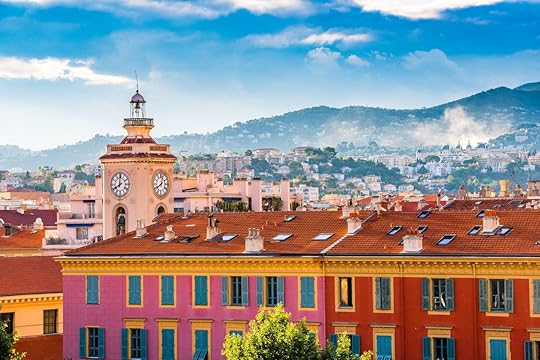
French people are gonna be so mad about this. A country where the people aren’t exactly jumping up and down at the prospect of Americans visiting all summer surely won’t be pleased to learn that there’s a way we can visit, literally, the entire country for almost nothing. Which — while great news for any of us who’ve wanted to see the beaches of Nice, the bright lights of Paris, and the wine country of Bordeaux without having to make multiple trips — might not be the highlight of the year for locals.
But that’s the French’s problem. And the problem of the bus-and-train mavens at Wanderu. They did some digging and found the optimal bus routes to take through France that’ll have you stopping in 10 of the most beautiful, diverse, and delicious cities in the country for under $150. The fares they found were averages, so you might end up spending even less, or a little more. But you definitely won’t find a better way to see France on a budget.
1. Paris to Nantes — five hours, $14.63

Photo: Daliusposus/Shutterstock
After spending the day getting your requisite French vacation pictures under the Eiffel Tower and not-eating a croissant at a café, hop on the bus west to the onetime industrial hub of Nantes. This port city has become a leader in biodiversity and urban green space, with over 8,300 acres of parks. Hit the Jardin des Plantes botanical garden for the most serene spot in the city. But do not leave without spending some time at Les machine de l’ile. Here in the former shipyards, art comes to life as sketchbooks from Leonardo DiVinci have become winged beasts you can ride, an elephant with a house built into it, a four-story merry go round, and other trippy attractions.
2. Nantes to Bordeaux — four hours, $13.82

Photo: RossHelen/Shutterstock
Four hours south along the Atlantic coast brings you to France’s best-known wine region in Bordeaux. And while your time is definitely well spent touring the countryside, stopping to taste at Chateau de Pitray and Chateau Mouton Rothschild, the city itself has the second-most preserved buildings in the country after Paris. Take some time to walk around the UNESCO World Heritage site in the historic quarter, then hike to the top of the Pey-Berland tower, a 15th-century bell tower with spectacular views of the city.
3. Bordeaux to Toulouse — three hours, $3.35

Photo: FredP/Shutterstock
For less than the price of the city bus in some US cities, you can travel all the way to Toulouse, smack in the middle of the rolling hills of Occitania. “This pink city” is a marvelous collection of coral buildings with terra-cotta roofs, making the entire place glow a marvelous shade of rose at sunset. Though you’ll definitely want to tour around historic sites like the Theâtre du Capitole and the Basilique Saint-Sernin — the largest Romanesque building still standing in Europe — take time to explore Toulouse’s modern side, too. It’s the center of the French space program, so you can see a real rocket ship and tour the Cité de l’espace, which you should absolutely tell every French person you meet reminds you of Houston.
4. Toulouse to Montpellier — three hours, $10.06

Photo: RossHelen/Shutterstock
After spending more time than you’d probably like to on buses, a long hike is just what your legs need. Just outside Montpellier along the Mediterranean coast, you can get your exercise fix at Pic Saint-Loup where hiking trails through the mountain have views out to the water. After, relax at a café along the Place de la Comédie, and converse with the local college students who call the city home. Nearly a third of the population attends the Université de Montpellier, making this a little like visiting a scenic, historic version of Starkeville.
5. Montpellier to Nice — five hours, $9.39
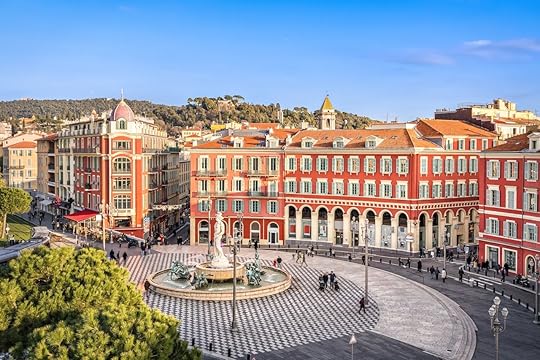
Photo: Sergey Dzyuba/Shutterstock
No summer trip through France is complete without a stop in the Cote d’Azur and the stunning blue waters of Nice. The city itself is an architectural marvel, but you’d be remiss if you didn’t take the chance to explore the little hillside villages that sit perched atop the mountains nearby. Saint-Paul-de-Vence is among the most charming, as is the artsy enclave in Eze. You’re also only a short ride from the grand casinos and opulent harbors of Monaco, Europe’s most expensive capital that can still be done cheaply if you know the right people.
6. Nice to Marseille — two hours, $3.35
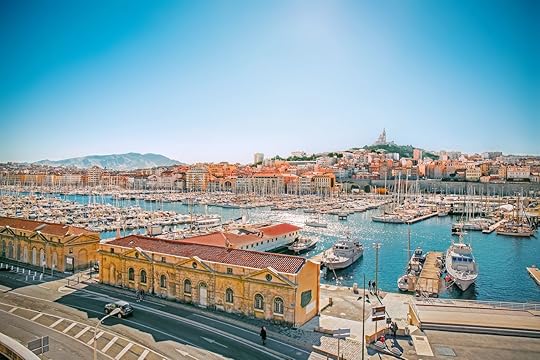
Photo: Mariya Golovianko/Shutterstock
The shortest ride of your journey is also the most scenic, doubling back through Provence from Nice to Marseille. Here you’ll find France’s most international city, a longtime destination for immigrants from Algeria and other parts of North Africa. Though the architecture is still very French, you’ll find the streets filled with people speaking different languages and the smell of tagines and kebabs filling the air. Marseille is also known in Europe for having one of the continent’s best hip-hop scenes, and you can find up-and-coming acts at Escape Julien almost any night of the week.
7. Marseilles to Lyon — four hours, $1.11
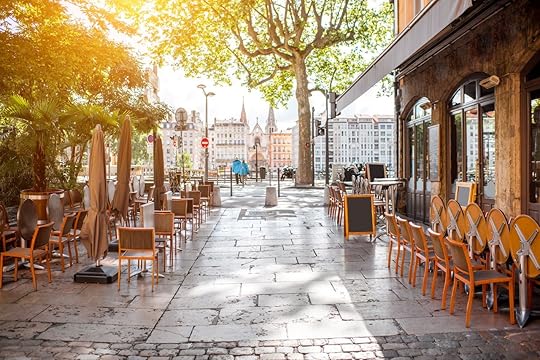
Photo: RossHelen/Shutterstock
Though you’re not exactly working up a huge appetite sitting on a bus for four hours, you can’t go to a city with 20 Michelin-starred restaurants and skimp on the food. Lyon is pound-for-pound the best food city in France, with spots like Restaurant Paul Bocuse gaining the rare three-star rating, and Takao Takano showing off two stars. Lyon is also only a couple of hours from the French Alps, so if all that rich food has you jonesing for some outdoors, it’s an easy side trip. Or you can just stick around the city and stroll the cobblestone streets of the historic Vieux Lyon.
8. Lyon to Strasbourg — seven hours, $11.19
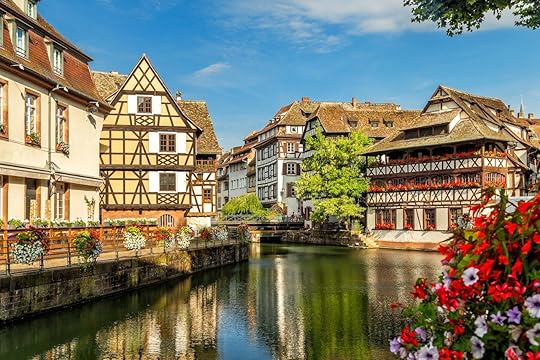
Photo: Vaflya/Shutterstock
One of the best parts about traveling in Europe is visiting border towns where you get the feel of one country while squarely in another. The Grand Est region of France is one of those places, set right along the German border and full of towns with houses that look like they popped out of an old fairy tale. Take a walk along Strasbourg’s central canal and admire the Bavarian feel, then head out into the rest of the region into Riquewihr and Ribeauvillé, villages that inspired the fictional town in Beauty and the Beast. Nearby you’ll also find scores of countryside vineyards where you can taste gewürztraminers, Rieslings, and pinot gris for next to nothing.
9. Strasbourg to Lille — nine hours, $16.92
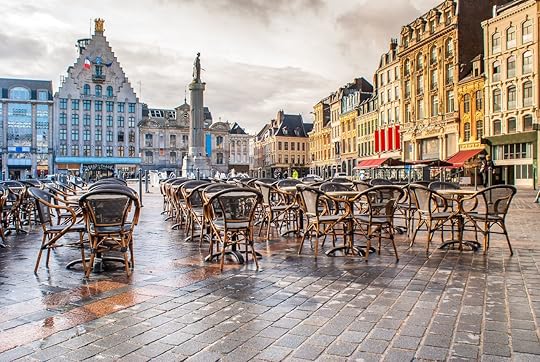
Photo: Dziorek Rafal/Shutterstock
We said touring 10 beautiful cities in France would be cheap. We never said it would be easy. Nine hours on a bus is rough, but you’ll be rewarded with one of the most unique cities in the country in the Flemish enclave of Lille. Here you can stuff your face with waffles before perusing the Marché de Wazemmes and sampling a few of the almost-Belgian beers. Then ponder on fine art from Donatollo, Goya, and Veronese at the Palais des Beaux-Arts de Lille museum. If you want to check another country off your list, Belgium is just a stone’s throw away, and you can be in its capital city of Brussels in less than an hour and a half.
10. Lille to Paris — three hours, $3.35

Photo: S.Borisov/Shutterstock
Your last leg is a relatively short, three-hour jaunt back into Paris, where you can immediately begin boasting to all your friends about how you just saw the entire country for less than a monthly gym membership. Stuff like lodging, food, and the occasional glass of wine may have upped that tally a little, but you still made it around one of the most beautiful places in the world without spending much on transportation. And hopefully proved some locals wrong about Americans along the way. 

More like this: 7 castles to visit in France besides Versailles
The post How to visit 10 of France’s most beautiful cities for under $150 appeared first on Matador Network.

Philadelphian parents
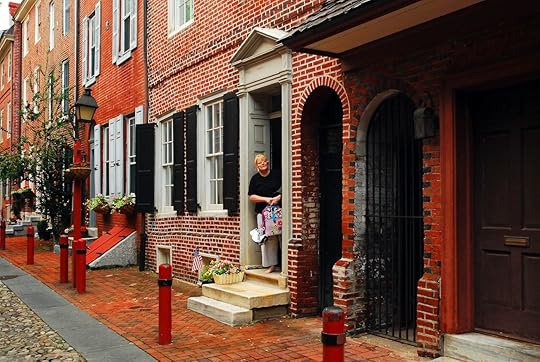
You can’t fight it, that Philadelphia childhood has scarred you. Growing up in the City of Brotherly Love, you’ve learned certain things that you just cannot shake no matter the years, like the instinct to cook enough food to feed a small army for any given occasion. These are some of the telltale signs that you were raised by a Philadelphian parent.
1. You never miss a family event.
It’s Saturday and you think you’re going to stay home? Nice try. It’s a christening, birthday, or house-warming somewhere in your family and you’d better believe that you need to be there.
2. You always answer your phone when they call.
There’s no silencing your phone when it’s a call from your parents; we weren’t raised like that. You pick up as quickly as possible when that sweet picture of you and your momma pops up.
3. You call home weekly.
Not only do you pick up when they call, but you make sure that you call to check in at least once a week. Partially because you miss them, partially because you live in constant fear of the always over-the-top guilt trips.
4. You love big and hard.
We were taught to love intensely. In our homes, there’s hugging, crying, and yelling because we don’t do this whole family thing halfway. Philly parents raise us to be passionate people, and we don’t let them down.
5. You cook enough food to feed seven households for holidays.
Whether five people are coming to a holiday dinner or 15, there’s still going to be enough food to feed your entire block. We don’t just roast a turkey around here and call it a day.
6. When you say family vacations, you mean within a two-hour drive.
Hopping on a plane for an African safari is not our idea of a family getaway. Renting a house in the Poconos or at the shore for a week is more our speed.
7. You talk about the neighborhood you’re from with pride.
It doesn’t matter which part of Philly you grew up in; you’re proud when someone asks you for it. Your momma didn’t raise you to be ashamed of anything to do with your family or your childhood.
8. You respect your elders.
You can tell who was raised by Philadelphia parents by how they treat their elders. We say “Ma’am” and “Sir,” and we offer our seats when they need them. We know better than to do otherwise.
9. You have a healthy appetite even when you’re not hungry.
Food is life, and not just because you need it to actually survive. In a Philly household, food is also comfort, celebration, and condolences. Even if you were eating as you walked in the door of your house, you better figure out a way to get hungry ASAP because there’s no turning down food once you’re inside. 

More like this: 7 things you’ll never hear a Philadelphia mom say
The post The 9 signs you were raised by a Philadelphian parent appeared first on Matador Network.

Matador Network's Blog
- Matador Network's profile
- 6 followers



